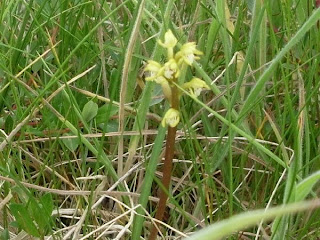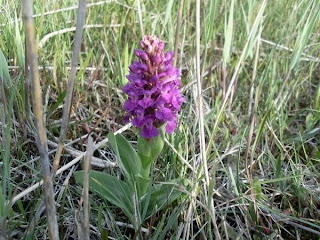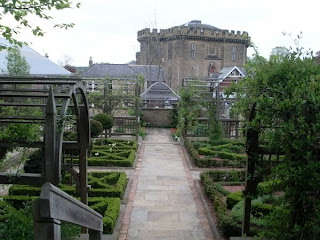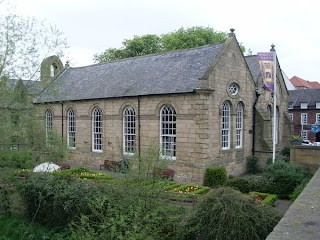



I have known for some time where Coralroot orchid grows but over the years I haven't been able to look for it at the right time of year. I went up to Holy island today in the hope of seeing this plant. I roughly knew where a plant had been found but when you are on your own these dune slacks are enormous and you don't know where to start. After almost giving up after about half an hour I found one, second picture above. These are tiny plants ; only a few centimetres high. The snook is my favourite part of Holy island and I didn't go anywhere else today. It is a great expanse of dune system that holds an amazing amount of flora. There were many orchids in flower such as Northern marsh and Early purple orchids. The place is covered with pirri pirri bur plus at least a dozen species of rush and sedge. Also in flower is Common butterwort growing among the Quaking grass (top). The only bird of note was a Pied flycatcher but when I was looking through the bushes for migrants I came across another Coralroot orchid. This one was more attractive with the flowers fully open (bottom two pics). You could even see the coral like base of the second plant but unable to photo this as it would mean disturbing some of the surrounding vegetation. A very satisfying afternoon.











































